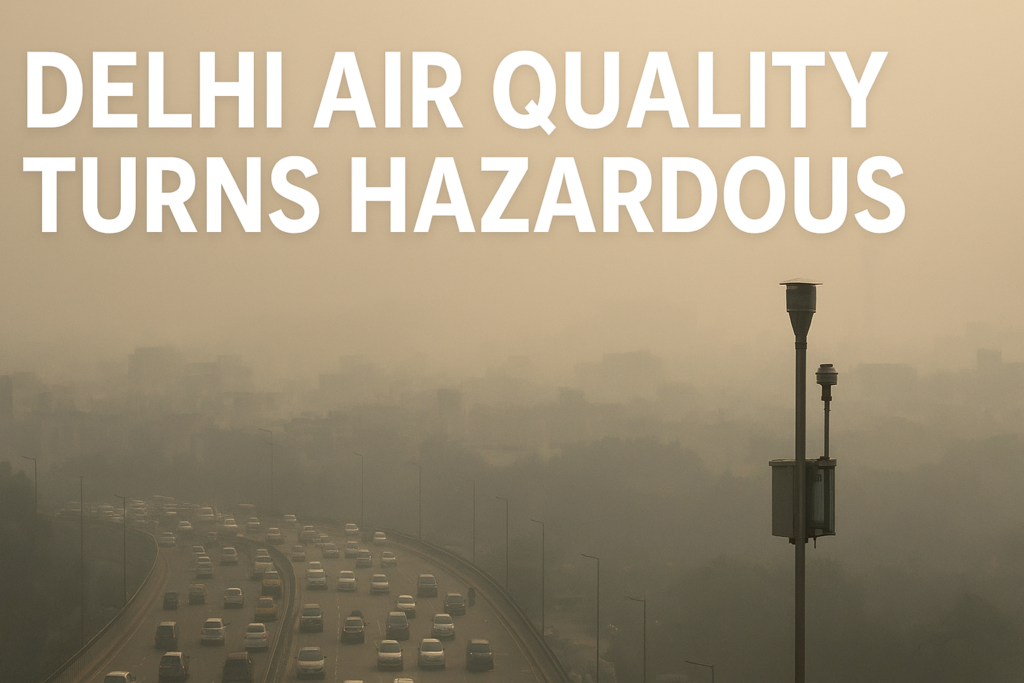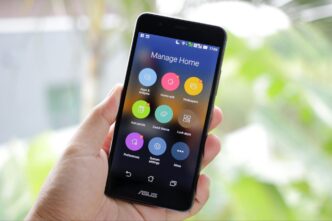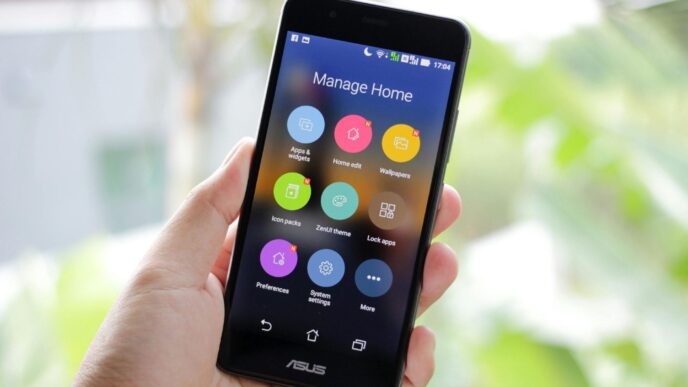
Delhi, India’s bustling capital, is once again in the headlines — not for its politics or festivals, but for its dangerously high air pollution levels. As of today, the city’s Air Quality Index (AQI) has crossed 370, placing it in the “Very Poor to Hazardous” category. With a thick haze covering the skyline and the sharp smell of smog filling the air, Delhi’s air crisis has reached alarming proportions.
Current Air Quality Status in Delhi
According to data from the Central Pollution Control Board (CPCB) and AQI.in, the city’s overall AQI is hovering between 340 and 380, which falls under the “Very Poor” category.
PM2.5 levels: Around 255 µg/m³
PM10 levels: Around 330 µg/m³
These levels are five to six times higher than the safe limit prescribed by the World Health Organization (WHO). The air in several localities such as Anand Vihar, Rohini, Dwarka, and Jahangirpuri has turned hazardous, making it unsafe for prolonged outdoor exposure.

Major Causes of Delhi’s Air Pollution
Vehicle Emissions
With millions of vehicles plying daily, exhaust fumes contribute massively to Delhi’s PM2.5 and PM10 concentration.
Crop Burning in Neighboring States
Stubble burning in Punjab, Haryana, and Uttar Pradesh adds to the seasonal spike in pollution, especially during October and November
Construction and Dust
Unregulated construction activities and road dust significantly worsen particulate matter levels.
Industrial Emissions
Factories and thermal power plants in and around Delhi release harmful gases such as sulfur dioxide (SO₂) and nitrogen oxides (NOx).
Firecrackers During Festive Season
Despite restrictions, firecrackers used during Diwali celebrations dramatically raise pollution levels overnight
Impact on Health
Short-Term Effects: Irritation in eyes, throat, coughing, and breathing difficulty.
Long-Term Effects: Asthma, chronic bronchitis, heart disease, and reduced lung function
Vulnerable Groups: Children, elderly, and people with respiratory or cardiac conditions are most at risk.
DIGI MERCH STORE PRINT ON DEMAND

Government Measures and Public Response
GRAP (Graded Response Action Plan) has been activated to restrict construction and limit vehicle movement
Odd-Even Car Rule may be considered if the situation worsens.
School Advisories: Some schools have shifted to online classes to protect children from exposure.
Safety Tips for Delhi Residents
Avoid Outdoor Activities: Especially in the morning and late evening when pollution is highest.
Use N95/N99 Masks: These help filter harmful particles from the air.
Install Air Purifiers: Maintain indoor air quality, especially in bedrooms
Stay Hydrated and Eat Antioxidant-Rich Foods: Helps your body fight pollutants
Monitor AQI Apps: Stay updated with hourly air quality readings.
Conclusion
Delhi’s pollution problem is not new — it’s a recurring environmental crisis that demands urgent collective action. Government regulations, cleaner technologies, and responsible citizen behavior are key to restoring clean air to the city. Until then, residents must stay cautious and proactive in protecting their health
Delhiairquality. Processdiagrams
Delhipollutiontoday. Websitebanner
Delhipollutionlevel. OutdoorGear
Delhihazardousair. dailyprompt
AirpollutioninDelhi. SmartHome
Comment
















Thỏa sức lưu xu hướng bằng tải video TikTok—có/không watermark, hỗ trợ caption.
I do trust all the ideas youve presented in your post They are really convincing and will definitely work Nonetheless the posts are too short for newbies May just you please lengthen them a bit from next time Thank you for the post